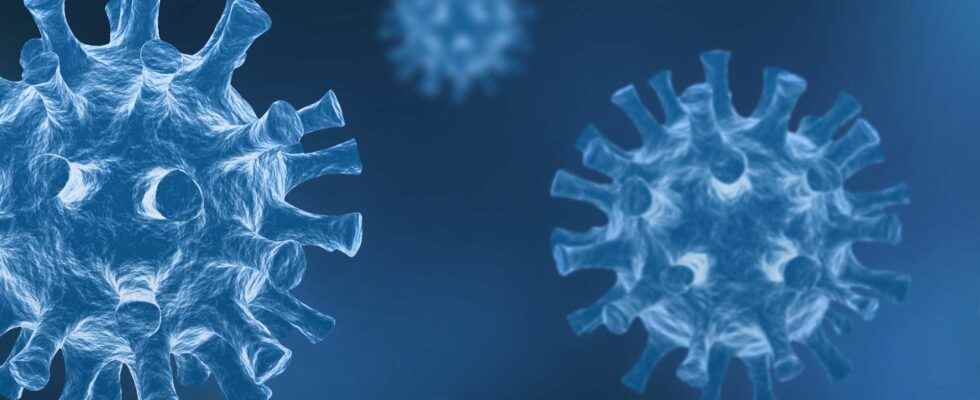The start of the 2022 school year is approaching as the seventh vague of Covid-19initiated at the beginning of July, ends – there are around 17,000 positive cases every day. In a few days, approximately 12 million children and adolescents will return to school as the protocol health is at the “base” level of the measures, i.e. the lowest. Classes will be face-to-face in all primary and secondary schools, with no restrictions on activities. physical and sports.
If the Covid-19 no longer makes the headlines, it seems clear that the SARS-CoV-2 is here to stay », according to ECDC, the European Agency for Disease Prevention and Control. A report published on August 29, 2022 presents several predictive scenarios on the evolution of the Covid-19 pandemic for the next ten years. These scenarios, which extend between 2022 and 2032, are qualitative and not quantitative. In other words, they describe a probable situation, based on currently available scientific data, but their probability of occurrence has not been calculated.
From a diminished threat to a new pandemic
In the first scenario, “a diminished threat”, the majority of the population is immune to Covid-19, whether through vaccination or natural infection. Consequently, the symptoms of Covid-19 are light. If SARS-CoV-2 is still circulating and new variants emerging from time to time, their impact on the health system remains moderate thanks to cross-immunity conferred by vaccines or past infection. Nevertheless, the risk that a variant with different properties upsets this scenario and induces an increase in mortality and hospitalizations cannot be ruled out.
For this scenario to hold, the new variants must not escape the vaccines available, the vaccination coverage must remain high throughout the population and the latter must have learned to live with the virus. Finally, this scenario also implies the feasibility of an effective vaccine against several variants and access to drugs antivirals.
The second scenario, that of “regular infections” resembles the first, but in the latter, variants with immunological properties appear more often. Vaccines, renewed every year, are available to reduce the pressure on health systems. For the third scenario, the ECDC anticipates a tense situation. SARS-CoV-2 still circulates at high levels and variants appear very frequently, overriding vaccine or natural immunity and causing reinfections. There is then a season Covid” where the pressure on the health system is greatest, between November and February. Mortality is still low, but the pressure on hospitals is stronger.
The fourth scenario proposes a situation similar to the third, but thewinter becomes unmanageable in hospitals and the number of patients exceeds the reception capacities. This scenario is the first to advocate the establishment of personal protective equipment for those exposed – in other words, the return of the mandatory mask. Finally, the ultimate scenario is that of a “new pandemic. A new variant emerges and imposes itself against the others, it escapes the available vaccines and circulates even in people previously infected and causes more victims, overwhelming hospitals. The challenge is then to make the population accept restrictive health measures.
To prevent history from repeating itself, the ECDC insists that even if ” current scenarios appear less severe, adequate monitoring and control systems need to be in place to detect changes in the threat level posed by SARS-CoV-2, and preparedness needs to be strengthened in order to take effective action and proportionate in response to rapidly deteriorating situations “.
Interested in what you just read?
